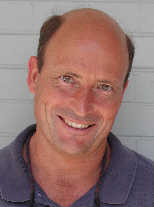
|
Math 2250
Nick Korevaar's home page
|

|
These notes and links are on-line, at the URL http://www.math.utah.edu/~korevaar/coord2250. Please contact me, Nick Korevaar, if you have any questions about teaching this class. My contact information is on my home page http://www.math.utah.edu/~korevaar.
Every instructor should be familiar with and follow the advice in the Departmental teaching guide.
Overview: Mathematics 2250 is an introduction to differential equations, and how they are used to model problems arising in engineering and science. Linear algebra is introduced, and used as a tool for analyzing systems of differential equations as well as standard linear equations. Computer projects are assigned to enhance the material.
This course mainly serves engineering and physics majors. However, some of them may become math majors (possibly double majors), by completing 2250-2270-3150 instead of 2270-2280. In fact, this course often convinces students they would like to learn more about mathematics.
This is a math course, and so it is important to motivate and explain why the math works. However, it is primarily a service course for other departments. Therefore the material also focuses on applications and problem solving. While still explaining where ideas come from and why they work, do tone down the rigor as compared to what you would do for an audience of Math majors in Math 2270-2280.
Prerequisites: Math 1210-1220 (or 1250-1260 or 1270-1280, i.e. single-variable calculus.) Students are also expected to have learned about vectors and parametric curves by taking one of Math 2210, 1260, or 1280, or Physics 2210 or 3210, or equivalent.
Text: Differential Equations and Linear Algebra, custom edition, by by C.H. Edwards and D.E. Penney; ISBN=9780558141066. This is essentially the third edition of the text (ISBN=9780136054252), with an additional packet of several extra sections. Students should be fine with the third edition, provided they can obtain copies of those extra sections, the most important of which is the one about electrical circuits.
Math 2250 course outline: The course begins with first order differential equations, a subject which students who took Calculus at the University of Utah or in a BC calculus course may have already touched on, but about which you should not assume prior knowledge. The first two chapters of the text are about first order differential equations; the geometric meaning of graphs of solutions; and the numerical techniques for approximating solutions which are motivated by this geometric interpretation. Important applications include the logistic population growth model from mathematical biology and various velocity-acceleration models from physics.
At this point in the course there is a four week digression from differential equations, to learn the fundamentals of linear algebra in chapters 3-4. Chapter 3 starts out with matrix equations and the Gauss-Jordan method of solution. From this concrete beginning the text develops basic vector space theory in chapter 4. This framework helps in understanding the solution space structure to linear differential equations and systems, among its other applications.
Chapter 5 is about the theory of second order and higher-order linear DE's, with a focus on those which describe basic mechanical vibrations and electrical circuits. There is a careful study of damping, beating, along with practical and actual resonance in forced oscillations.
After Chapter 5 the syllabus jumps ahead to Chapter 10, the Laplace transform. This is to make sure that Engineering majors will have time in the course to absorb this material, as their College expects them to learn the basic Laplace transform methods in Math 2250.
To succesfully model more complicated physical systems like shaking in multi-story buildings, one needs the framework of linear systems of differential equations. The linear algebra of eigenvalues and eigenvectors is developed in chapter 6, and used as a tool for studying systems of DE's in chapter 7.
Chapter 8 is about matrix exponentials. Most instructors do not have time for this optional chapter, although Grant Gustafson seems to have a way to cover some of its topics.
The final Math 2250 topic is Chapter 9, nonlinear systems and phenomena. This material ties together many different ideas, and is a wonderful capstone to the course: Behavior near equilbria is understood through linearization of the system; linearization uses multivariable affine approximation, the key idea of differential calculus; stability criteria near equilibria are explained in terms of eigenvalue and eigenvector analysis; the geometry of solution trajectories in the phase portraits of autonomous systems harks back to parametric curves in multivariable calculus, and the chain rule. It's worth pointing out that many of the most interesting (and complicated) dynamical systems on earth are non-linear.
Computer projects: By agreement with the College of Engineering, part of the course requirement consists of computer projects. The computer projects assigned in this course will be written in Maple. There is no class time scheduled specifically for computer projects, but it is not an instructor option to ignore the computer component.
Instructors and course TA's should work together (with Angie Gardiner) to schedule introductory Maple sessions in LCB 115, during the first few weeks of school.
It is useful to coordinate the computer projects between the various sessions, and Grant Gustafson usually makes good project templates available, which you can use or modify as desired. It is our convention to provide templates and support in Maple, but to allow students to use Matlab to complete the problems if they wish.
In addition to the course-wide projects below, whenever I teach Math 2250 I expect to assign Maple as part of my section's homework, and to make use of technology or its output in many of my lectures.
Typical projects for this course include a large fraction of the following:
- Basic introductory problems to get used to the Maple environment, combined with chapter 1-2 material such as line fields, trajectories, in the context of the house temperature model in section 1.5
- Laplace transform project or problems
- Linear algebra project (or homework problems in which technology is to be used)
- Mechanical oscillations (chapter 5.4-5.6)
- Earthquake induced vibrations of a multistory building (7.4).
- Phase portrait project, potentially using pplane (9), (available on-line as an applet, google "pplane").
Grading policy: Instructors are expected to give at least two in-class midterms as well as a comprehensive in-class final exam. The computer projects are to be graded. In addition, there is to be regularly assigned homework, of which either a large representative sample is graded. Instead of grading homework, it is possible to use regular quizzes test classroom and homework material. The department provides instructors with homework graders - contact Angie Gardiner to request such a grader as early as possible. She can also provide extra graders for midterms, beyond the course TA's and instructors.
Tutoring center: Remind students about the Rushing Student Center, in the basement between JWB and LCB. There is more tutoring center information on our web pages, http://www.math.utah.edu/ugrad/mathcenter.html.
Suggested lecture schedule: An approximate lecture schedule is located at
http://www.math.utah.edu/~korevaar/coord2250/2250lectures.html.
Previous course home pages: Among others, recent instructors of Math 2250 here at Utah include Grant Gustafson, Darci Taylor, Damon Toth and myself. Previous instructors can be excellent resources if you have questions about teaching this class. Here are links to their home pages, which likely include syllabus, exam, project and homework details. These may be very helpful as you construct and teach your own course:
- Grant Gustafson, spring 2009: http://www.math.utah.edu/~gustafso/index2250S2009.html
- Nick Korevaar, fall 2008: http://www.math.utah.edu/~korevaar/2250fall08
- Darci Taylor, fall 2008: http://www.math.utah.edu/~darci/math2250.html
- Damon Toth, spring 2009: http://www.math.utah.edu/~toth/teaching/2250-spring-2008.html